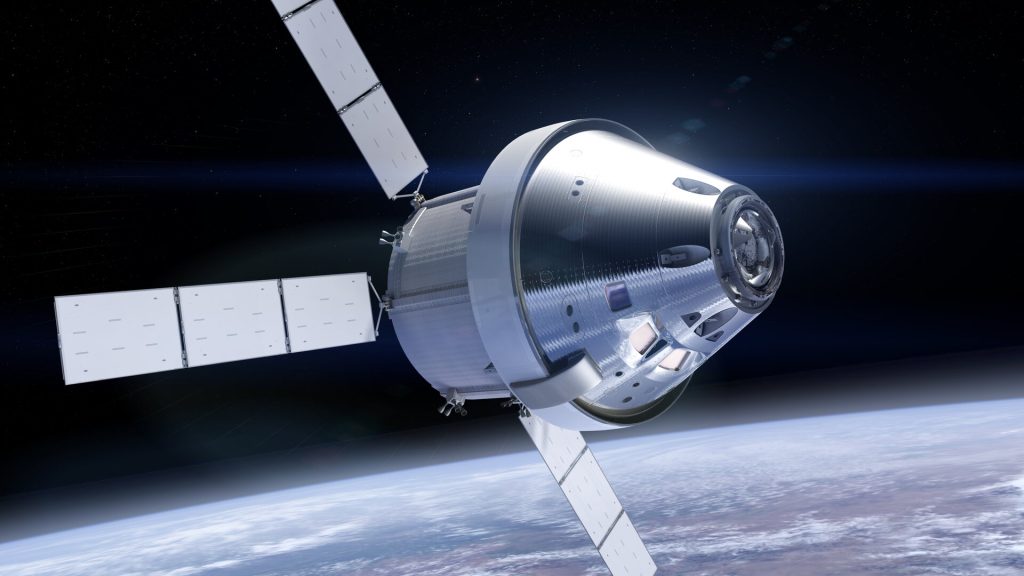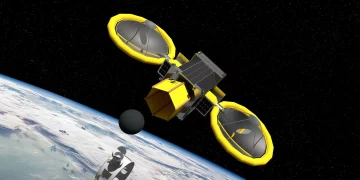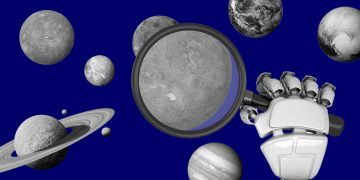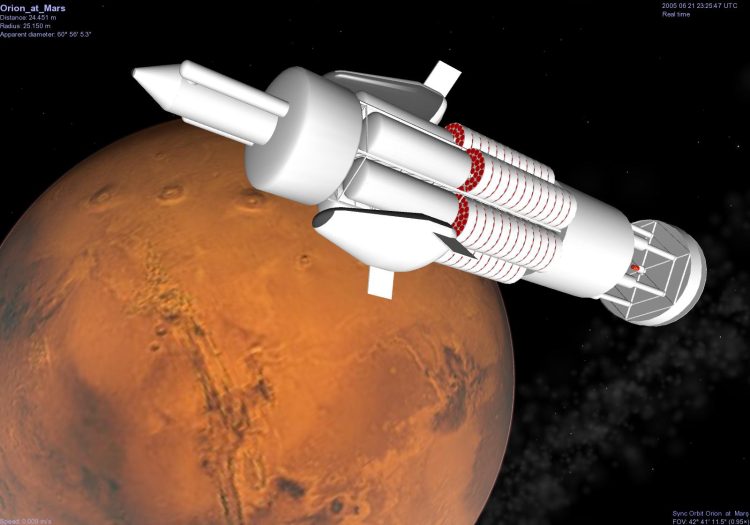NASA’s Artemis program marks a groundbreaking chapter in space exploration. Set to return humans to the Moon after more than five decades since Apollo 17, Artemis is not just about revisiting the Moon—it’s a step toward human missions to Mars and beyond. With ambitious goals and advanced technology, Artemis is designed to establish a sustainable lunar presence, conduct scientific research, and prepare humanity for the next great leap in space exploration.
This article will explore the objectives of the Artemis program, the mission architecture, key milestones, and how it sets the stage for future interplanetary exploration, especially human missions to Mars.
1. What is the Artemis Program?
The Artemis program, named after the Greek goddess of the Moon and twin sister of Apollo, is NASA’s flagship lunar exploration initiative. Artemis aims to land “the first woman and the next man” on the Moon, focusing on the lunar South Pole—a region believed to hold vital resources such as water ice.
Artemis is not a single mission, but a series of missions designed to achieve multiple milestones:
- Artemis I: An uncrewed test flight to ensure the Space Launch System (SLS) and Orion spacecraft are ready for crewed missions.
- Artemis II: The first crewed mission, orbiting the Moon and testing the spacecraft systems.
- Artemis III: The highly anticipated mission to land astronauts on the lunar surface, with plans to land on the South Pole in the mid-2020s.
These missions will not only demonstrate NASA’s capabilities in deep space exploration but also lay the foundation for a long-term lunar presence.
2. Key Objectives of the Artemis Program
The Artemis program is built around several key objectives aimed at advancing our understanding of the Moon, testing critical technologies, and preparing for missions to Mars.
1. Returning Humans to the Moon
The most visible objective of Artemis is to land astronauts on the Moon. This goal is more than a symbolic return to the lunar surface—it represents an opportunity to explore new regions of the Moon, particularly its South Pole. The area is of significant scientific interest because of its potential water ice reserves, which could be used for drinking water, oxygen, and even rocket fuel.
2. Establishing a Sustainable Lunar Presence
Artemis is focused on creating a sustainable human presence on the Moon, a long-term goal that differs from the Apollo missions, which were short-term visits. NASA intends to establish a base that can support astronauts over extended periods, enabling scientific research, resource utilization, and the development of technologies for deep space exploration. The Lunar Gateway, a space station in lunar orbit, will be essential to this mission, providing a staging point for missions to the lunar surface and beyond.
3. Scientific Research and Lunar Resources
One of the main drivers of the Artemis program is scientific exploration. The Moon’s surface is a record of the solar system’s history, and by studying it, we can learn more about its formation and the broader history of our solar system. The Artemis missions will also investigate the Moon’s resources, such as water ice, which could be crucial for future missions and the potential for lunar mining.
The water ice found at the lunar poles could be used to support human life by providing drinking water, oxygen, and hydrogen for rocket fuel. This makes the Moon a potential stepping stone for deep space missions, including missions to Mars.
4. Testing New Technologies for Mars Exploration
The Artemis missions will serve as a testbed for technologies that will be crucial for future missions to Mars. NASA intends to use the lessons learned from landing on and living on the Moon to prepare for human missions to Mars, which are expected to take place in the 2030s.
This includes the development of life support systems, space habitats, and advanced propulsion technologies. The Artemis program will also test autonomous systems and robotic exploration techniques, which will be critical for operating in the harsh Martian environment.

3. The Artemis Mission Architecture
The Artemis program is built upon a comprehensive mission architecture designed to ensure safe and successful lunar exploration. The key elements of this architecture include the Space Launch System (SLS), Orion spacecraft, and the Lunar Gateway, among others.
1. Space Launch System (SLS)
The Space Launch System is NASA’s next-generation rocket designed to carry astronauts and cargo beyond low Earth orbit. The SLS will be the most powerful rocket ever built, capable of carrying larger payloads and crewed missions to the Moon and beyond. The SLS will provide the necessary lift to send the Orion spacecraft and other mission payloads on their journey to the Moon.
2. Orion Spacecraft
The Orion spacecraft is the crew vehicle that will transport astronauts to lunar orbit and back to Earth. Equipped with advanced life support systems, Orion will be capable of deep space missions and has been designed for crew safety in the harsh environment of space. For Artemis, Orion will be used in conjunction with the SLS to carry astronauts on crewed missions around the Moon, and eventually, to land on the lunar surface.
3. Lunar Gateway
The Lunar Gateway is a space station that will orbit the Moon, serving as a staging point for missions to the lunar surface. It will provide astronauts with a place to dock before descending to the Moon, and it will also serve as a laboratory for scientific research. The Gateway will be an international collaboration, involving NASA and several global partners, and it is expected to play a crucial role in enabling long-duration stays on the Moon and eventually in Mars exploration.
4. Human Landing System (HLS)
A critical component of Artemis is the Human Landing System (HLS), which will be used to land astronauts on the lunar surface. NASA has selected multiple companies to develop landers, including SpaceX’s Starship and Blue Origin’s Blue Moon, which will transport astronauts from the Lunar Gateway to the surface of the Moon.
The HLS is designed to allow for a safe, efficient descent to the lunar surface, and it will be crucial for landing astronauts on the lunar South Pole, where resources such as water ice may be found.
4. Key Milestones in the Artemis Program
The Artemis program is currently in its early stages, but several key milestones are on the horizon that will shape the future of lunar exploration.
1. Artemis I: Uncrewed Test Flight
The first mission, Artemis I, is an uncrewed test flight designed to verify the performance of the SLS and the Orion spacecraft. Artemis I will send Orion around the Moon in a mission lasting about three weeks. This mission will ensure that the spacecraft and its systems are ready for crewed flights.
2. Artemis II: The First Crewed Mission
The second mission, Artemis II, will be the first crewed mission to orbit the Moon since Apollo 17. During this mission, astronauts will fly around the Moon aboard the Orion spacecraft, testing critical systems for future lunar landings. This will be an important step before landing on the Moon.
3. Artemis III: Landing on the Moon
Artemis III will be the first mission to land astronauts on the Moon in over 50 years. NASA plans to land astronauts on the lunar South Pole, a region that has never been explored by humans. The astronauts will spend a week on the lunar surface, conducting experiments and collecting samples. This mission is scheduled to take place in the mid-2020s.
4. Lunar Base and Mars Preparations
After Artemis III, NASA will work toward establishing a sustainable human presence on the Moon through the Lunar Gateway and additional lunar missions. This will lay the foundation for the eventual goal of sending humans to Mars, with Mars missions anticipated in the 2030s.
5. Challenges and Future Considerations
While the Artemis program represents a giant leap in space exploration, it is not without its challenges. The development of new technologies, the establishment of a permanent lunar base, and the logistics of long-duration space travel all present significant hurdles. Additionally, NASA will need to address the risks of space radiation, the psychological and physical effects of deep space travel, and the complexities of interplanetary coordination.
As the Artemis program progresses, it will be crucial for NASA to collaborate with international space agencies, private companies, and scientific communities to achieve its ambitious goals.
6. Conclusion: A New Era of Lunar Exploration
NASA’s Artemis program is poised to usher in a new era of lunar exploration, one that focuses not only on scientific discovery but on establishing a sustainable human presence on the Moon. By leveraging advanced technology, international partnerships, and a focus on long-term goals, Artemis lays the groundwork for future missions to Mars and beyond.
The successful completion of Artemis I, II, and III will mark milestones in humanity’s journey to becoming an interplanetary species, with the Moon serving as the proving ground for missions to Mars. Artemis is not just about returning to the Moon; it’s about setting the stage for the next great leap in space exploration—one that will shape humanity’s future in the cosmos.


















































Discussion about this post